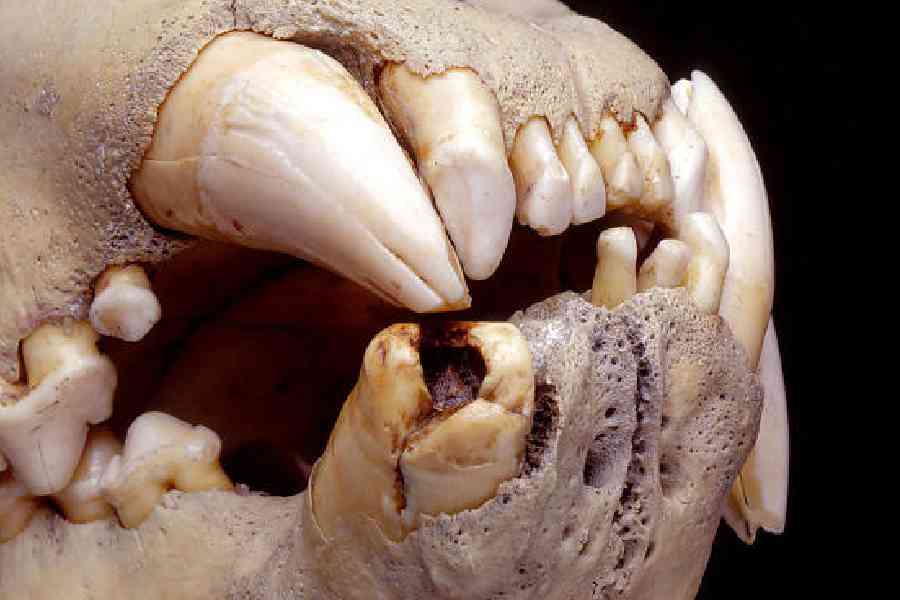In British East Africa in 1898, two lions living along the Tsavo River were hungry.
This was bad news for the workers building a railroad there. They would retreat to their tents at night and, come morning, some of the men would be missing.
“Bones, flesh, skin and blood, they devoured all, and left not a trace behind,” wrote Lt. Col. John Henry Patterson, a British army officer leading the railroad project.
During the nine-month reign of the Tsavo man-eaters, the lions, which like most males of the area lacked manes, devoured around 35 workers. Eventually, construction of the railroad stopped completely until Patterson shot the two cats.
The lions’ bodies were initially fashioned into trophy rugs. In 1925, the Field Museum in Chicago purchased the rugs for display. The two skulls ended up in the museum’s collection.
It turns out that the Tsavo lions had a taste for more than men. Using hair fragments preserved in the lions’ broken teeth, scientists discovered DNA from several species. Their findings were published in the journal Current Biology, offering a snapshot of the surprisingly diverse buffet of wildlife once consumed by a top predator in what is today Kenya.
In the 1990s, Thomas P. Gnoske, a collections manager at the Field Museum, got a chance to examine the Tsavo lions’ skulls. He noticed hair fragments in the cats’ cracked canine teeth. In the new paper, Gnoske teamed up with other researchers to flesh out the Tsavo lions’ diets by examining the century-old hair fragments with microscopy and genetic analysis.
According to Ross Barnett, a paleogeneticist who was not involved in the new study, hair is a hardy source of preserved DNA.
The hair packed inside the Tsavo lions’ broken teeth proved to be a dietary time capsule.
“We were looking at these tooth cavities in the same way geologists look at soil,” said Alida de Flamingh, a postdoctoral researcher at the University of Illinois Urbana-Champaign, US, and the lead author of the new study.
The team focused on mitochondrial DNA in the hair fragments, which provide abundant genetic information that is relatively easy to decipher. They compared these DNA snippets with the genetic record of species native to the Tsavo region and matched them with several species, including oryx, waterbuck, zebra and giraffe.
The team discovered surprises in the hair samples too. Modern Tsavo lions prefer Cape buffalo. But the man-eating lions had virtually no buffalo hair in their teeth, an absence consistent with the spread of rinderpest, a cattle disease, through Africa in the 1890s. The team was also surprised to uncover DNA from wildebeest, a species that was not common then in the Tsavo region. This finding may help corroborate historical records suggesting that the lions left the rail encampment for nearly six months before resuming their killing spree.
There was even genetic material from the lions themselves in the sample. By comparing the two predators’ mitochondrial DNA— which is transmitted by maternal lineage — the team confirmed the theory that the two lions were indeed siblings.
The sample also contained DNA from multiple human individuals. Dating these hair samples may provide clues to when the lions first preyed on people. However, the researchers avoided further deciphering these remains until they could work more closely with local communities, which may be home to descendants of the lions’ victims.
Tsavo communities continue to live alongside lions, and the danger that these predators pose is still real.
“What strikes me about the Tsavo story is that it is almost incomprehensible to a 21st-century Western mindset,” Barnett said. “The terror that the night must have brought is unimaginable.”
NYTNS











